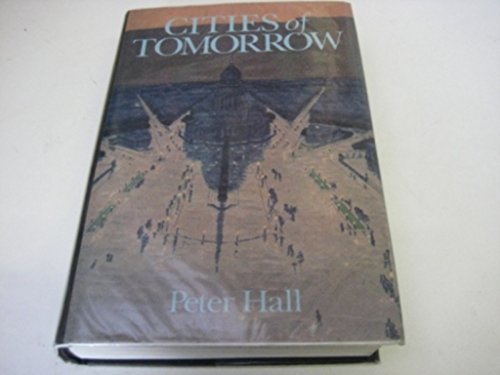Peter Hall traces theories of urban planning from the Victorian era to his present (mid-1980s). This book is a good summary of twentieth-century urban planning, though at times, it's a bit dry, which is saying something, when I'm a fan of the genre.
Hall starts his account with the urban poor in Victorian England and in similar locations around the globe at the time. For him, modern urban planning essentially originates in this milieu, the idea being, How can we reform society such that the urban poor will no longer live in such squalor?
One of these early plans was the Garden City, but like most such plans, the original theory rarely made it into actual practice, and the idea got twisted out of its original intent. Also, like so many of the ideas, in part because it was never put into practice as written, the planning theory did not end up helping the poor. Rather, its benefits went mostly to the middle class and the rich. The Garden City, in theory, was to be a city--or series of cities--interspersed in gardens. Each would be of limited size, with a green belt around it. In the city, there would be moderate space for homes, and there would be businesses and work within the city itself. It's this latter portion of the idea that rarely made it into reality. Instead, such cities became suburbs, with people commuting into the big city for work. This meant such cities only helped those with enough means to afford such a commute. The urban poor remained urban.
Another idea was one much maligned by Jane Jacobs--that of Corbusier. He had the concept of towers in parks. Again, his idea was thrown a bit out of context. When applied to the urban poor, such towers did not create wonderful communities. But, Hall notes, such towers could and did work for those of higher class.
Then there were the nonplanners, the anarchists, who essentially denoted that cities should grow on their own and that planners should work around that. Had I taken notes during my reading I could have likely explained this section better, as well as the sections previously. I will probably need to read the entire book over at some point.
Hall eventually turns his attention to the split between academic planners and those who practice, a split that made its way more felt in the second half of the twentieth century and that showed how academics had become uninvolved in how cities really work. In this same timeframe, there were more private-public partnerships, and some cities actually saw renewal, but again, the solutions led mostly to gentrification rather than actually helping the urban poor. In other words, the poor, rather than being raised up, were simply pushed out.
A final chapter focuses on poverty and racism. As Hall rightly notes, the middle class did grow from the time of the Victorians to the present such that some issues are less troublesome than they were one hundred years ago. He is also an advocate, it seems, based on the research he cites, for the death of family being a large cause for the fall into or continuing life in poverty, more so than race (though the history of racism certainly plays a role in where people fall in terms of class). Urban planning, it seems, while intended to aid in resolving these issues has ultimately not been able to solve the problem.
Thursday, September 20, 2018
On "Cities of Tomorrow" by Peter Hall ***
Labels:
Books,
Nonfiction,
Peter Hall,
Three-Star Nonfiction
Subscribe to:
Post Comments (Atom)







No comments:
Post a Comment